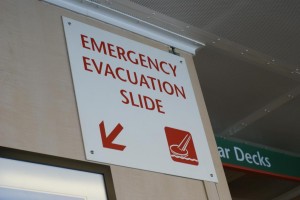Natural disasters and calamities can have devastating consequences depending on their intensity. However, the preparedness of the people and communities, Governments, private and public actors that it affects can also determine the gravity of the consequences. In a time of rapidly changing climate and an increased frequency of natural disasters, it is imperative for countries large and small to strengthen its disaster risk reduction, response and management mechanisms. In recent times, Digital Humanitarianism has emerged as an important aspect of this mechanism and more so in the event of the earthquake that shook Nepal and neighbouring Northern Indian states on April 25th 2015.
A few hours after the powerful earthquake measuring 7.9 on the Richter scale hit Nepal, the digital humanitarian response was quick. According to Patrick Meier’s LinkedIn article ‘Nepal Earthquake: Digital Humanitarians in Action’, following the earthquake the UN Office for the Coordination of Humanitarian Affairs (OCHA) teamed up with digital humanitarian platforms like the Standby Task Force and used their MicroMappers application “to crowdsource the analysis of tweets and mainstream media… to rapidly 1) assess disaster damage & needs; and 2) Identify where humanitarian groups are deploying (3W’s). Both Crisis Maps are being updated hourly (at times every 15 minutes).” Satellite imagery was also made largely available and, as a result, the impact of the earthquake could be closely examined by humanitarian aid agencies and other actors.
The Standby Task Force’s blog encourages people to help online through platforms such as Google Person Finder and MicroMappers. According to its website, the organization has around 400 people working tirelessly to locate people, share photos and images & other real time data with aid and rescue agencies. Other digital platforms such as DigitalGlobe participated in the efforts by making available high resolution satellite imagery of the affected areas. In its article, DigitalGlobe opens access to satellite data to support disaster response efforts in Nepal, DigitalGlobe mentions how other digital platforms enabled tagging buildings that were destroyed due to the earthquake’s impact. This proved particularly helpful for those involved in the response effort to deliver aid where it is most needed.
It is indeed heartening to see the digital community’s efforts and the results in coping with . However, in addition to lauding these efforts, the international community must incorporate the lessons learned and strengthen the integration of ICTs with disaster prevention mechanisms. We have seen the impact ICTs can have in disaster response and management; what could be even more helpful is if ICTs are strongly integrated in disaster prevention mechanisms to reduce disaster risk to a minimum. To realize this, institutional bodies responsible for disaster risk reduction, response and management such as Governments, district level- departments, grassroots level NGOs, philanthropic agencies, key players in the ICT ecosystem and above all the people themselves must make coordinated efforts.


